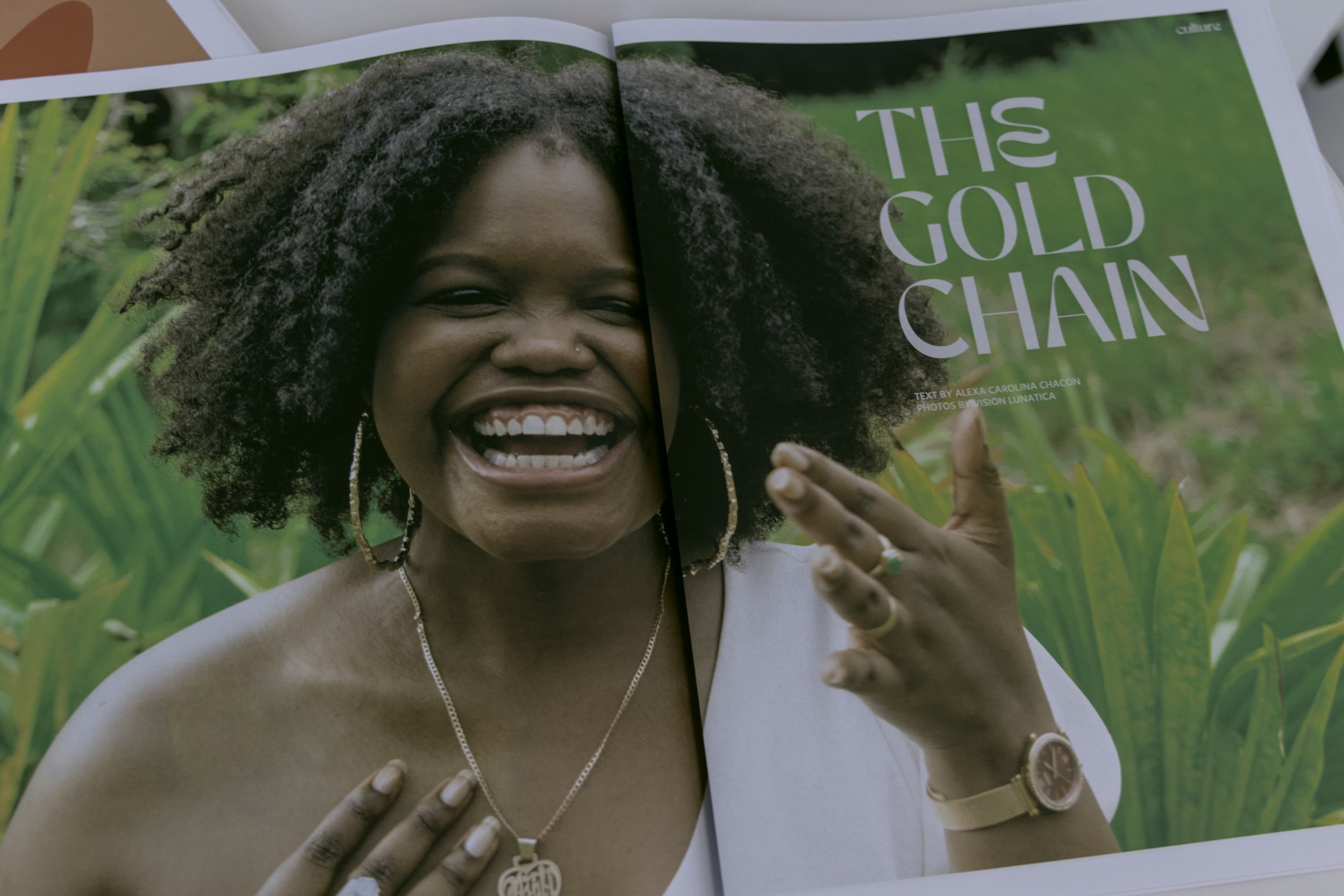Condé Nast Showcase: London Fashion Week
Tucked away in the thumping city life of London’s Soho, Condé Nast College of Fashion and Design presents a bold exhibit of graduates as part of the 2022 London Fashion Week. We’re greeted with an array of designers, directors and innovators, each displaying works of varying artistic vision and inspired thought.
In a collection composed of culture, fashion and lifestyle, Fashion Media student Alexa Carolina Chacon Herrera conveys an impressive publication inspired by her home country Panama. Niche, a magazine that captures cultural vibrancy coupled with an unflinching truth in digital format is designed to be in Spanish, translated for an international audience, as the tagline, ‘It reads in Spanish’ suggests. Niche is a powerful response to the gap in an underrepresented community. Alexa explained: “Back home, it’s very conservative… It’s not that the media hasn't done their job properly - this is just our (community’s) perspective; and that’s always valid.”
The word niche, pronounced ‘nee-chee’, has been used as a derogatory word in Latin American countries to define something as low status, tacky, or bad taste. “The idea is to play with the irony of the word,” Alexa explained, “and to portray all the things that were considered niche at some point that are now cool - to highlight culture, trends and the trickling effect that takes fashion in a looping wave.” Working from London, Alexa directed the project in Panama remotely, bringing together an insightful finished product that draws on sincerity and personal truth to create an honest, unfiltered collection of Panama and its under-served residents.
Across the room, Sophie Wang, Creative Director and Fashion Media student, stood out amongst the crowd with a colourful display from her newly launched magazine 20 Zine: a publication designed to explore the highs, lows and emotional blows of being in your twenties. It melds the work of various photographers, writers and fashion designers, and organises itself into three profound sections: success and purpose, love and intimacy, and identity and freedom. “I was addicted to magazines like Cosmopolitan in my early twenties,” tells Sophie, “But it’s clear now when I look back on the advice columns, aimed for people of my age at the time, that the majority were not healthy!”
Organically inspired, 20 Zine is a refreshing truth amongst an often misleading media industry, offering articles entitled: ‘Was it Possible I Was Wrong About My Dream Career?’ and, ‘Sorry I Can’t Come To The Phone Right Now, I’m About To Quit My Job!’ Taking inspiration from Vogue Scandinavia, a publication Sophie admires for its sustainability practices, 20 Zine is made-to-order to ensure a no waste ethos. “Sustainability is something that’s really important to me.” Sophie continues, “The paper is made from recycled silk and I also highlight sustainable fashion designers within the issue.”
Along the white staircases and expanding hallways that lead into the upper-levels of Condé Nast, there were more up-and-coming young graduates showcasing unique and exciting fashion in all its forms. Amongst the talent Julian Pinar Díaz, Fashion Communications student, showcases their collection inspired by gender-defying fashion. Celebrating the beauty of queerness and the LGBTQ+ community, in a synergistic intermix of creative forms, Julian began by expanding on a series of eight photographs that surrounded their exhibit entitled Genderless, and the importance of the gendered name plates underneath each photo. “Some people are simply not aware of the variety of different gender terms that exist.”
Each photo highlighted a sense of freedom: they effortlessly conveyed the never-ending revolutionary expansion of artistic expression within fashion, without the barriers that gender can often hold us to. The models, each wearing pieces from Julain’s own wardrobe, shone in vintage-preloved selections. “I use my own clothes as a way to challenge myself, to show that I can work with anything. I do believe that good quality goes a long way, but I am against the mass production of garments on the high-street.”
In the background, a short documentary film entitled Angels played amidst the exhibit. “I got the idea from a theory that says angels don’t have a gender - it's just us, as humans, that put these kinds of labels to physical appearances.” In a visual and forthright collection, Julian expressed a progressive liberty that is becoming more and more prominent: a call for inclusivity and a conscious understanding of culture in all its forms.
The range of exhibits on show at Condé Nast was undoubtedly bold. The night culminated in a showcase that celebrated several years of hard-work, making way for a generation of graduates to create fashion in their own, unapologetic way.














